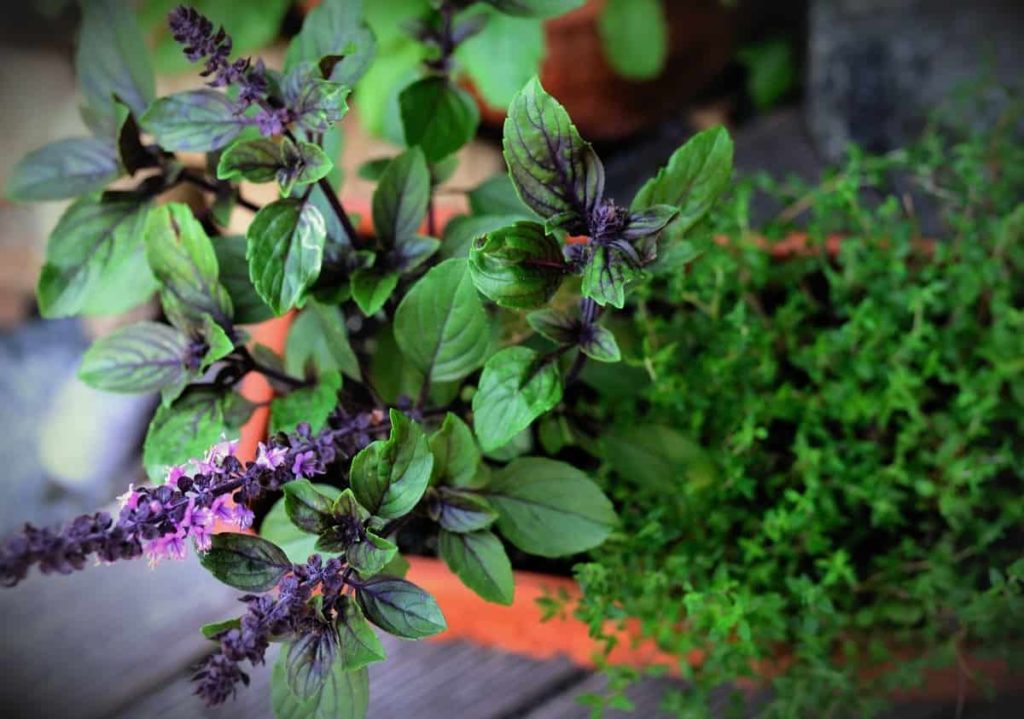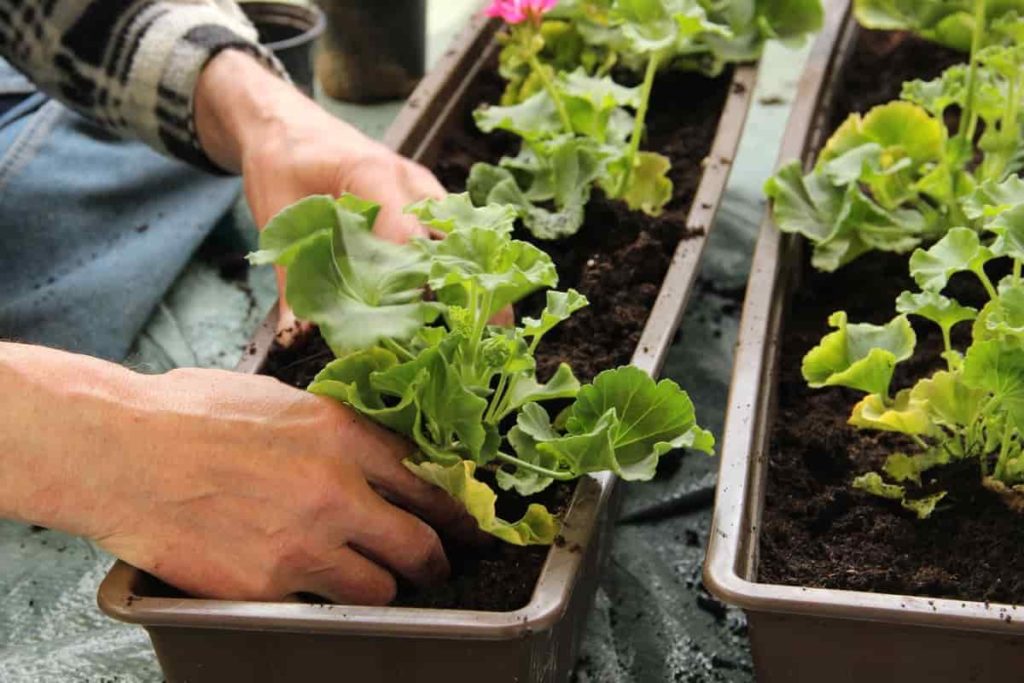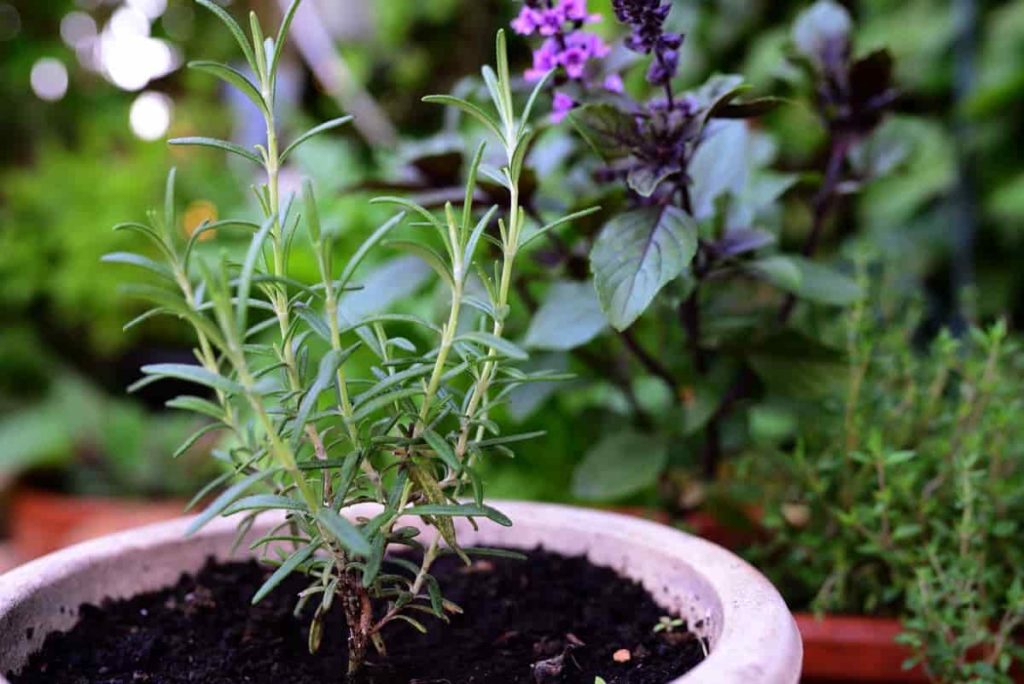Whether you are growing plants indoors or outdoors, fertilizer is essential for the success of container gardens. The easiest way to fertilize potted plants is to develop nutrient solutions and put them on a soil mixture. Fertilizer is absorbed by roots and quickly incorporates things that disappear from the existing soil. Even if your potting mix is perfect from the get-go, it will soon be lacking nutrients because they are constantly used by plants and leached out through the water. The faster a plant grows; you will need more fertilizer and water. Let’s check out the best fertilizers for the balcony garden.

Standard container potting soil has a lot of great ingredients to grow healthy pot plants. But those nutrients will not stay forever. They are used by plants and washed with pots whenever you water them. Feeding container plants is even more critical than those growing in the garden plot. Since they are not rooted in the earth, they cannot go deep erased or spread to find all the nutrients they need. Containerized plants are entirely up to us to provide everything they need to grow and thrive.
So that is why it is essential to give them regular fertilizers during the growing season. The choice of fertilizer analysis will depend on what type of plants you are growing. High nitrogen sources will be good for plants grown for their leaves, while flowering and vegetable crops prefer less nitrogen and more phosphorus varieties.
Water-soluble fertilizer – Feeding container garden plants with water-soluble fertilizers are easy. First, mix the fertilizer in a watering can as per the label instructions and use it instead of water. Generally, water-soluble fertilizer, which plants rapidly absorb, is applied every two to three weeks. Generally, you can mix this fertilizer in half the power and use it weekly.
Granular fertilizer – To use dry fertilizer, sprinkle a small amount evenly on the level of the potting mix only then sprinkle the water thoroughly. Use products labeled for containers and avoid dry lawn fertilizers, which are overly strong and are quickly flushed out.
Slow-release fertilizer – Slow-release fertilizers, also known as time or control release, work through releasing a small amount of fertilizer in the potting mix every time you water. Slow products produced for the past three months are suitable for most container plants, although long-lasting fertilizer is helpful for container trees and shrubs.
In case you missed it: Apartment Balcony Gardening in Small Area: How to Start for Vegetables, Fruits, and Flowers

A small quantity of fertilizer is always much better than most. Start feeding plants after about three weeks, as the bullet-in fertilizer usually drains out. If plants appear bent or withered, do not feed container plants. First, the water is well, then wait until the plant is profitable. Feeding is the safest for plants if the potting mix is moist. Water well after feeding to distribute fertilizer evenly around the roots. Otherwise, fertilizer can scorch roots and stems.
Best fertilizers for balcony garden
Homemade fertilizers for balcony gardening
- Coffee grounds – Coffee grounds come with many uses, but one of them is as excellent garden fertilizer. Recycle your coffee grounds to help make your soil acid. You can top dress by sprinkling the used coffee grounds on the soil surface.
- Banana peels – Banana peels can be a great source of potassium up to 42% and phosphorus up to 25%. Banana peel also has extra calcium, magnesium, and sulfur, so it is one of the best organic materials to make homemade fertilizer. The good idea is to place the banana peels or soak the peel in water inside the sealed mason jar for a week, then remove it from the sieve and use this water as fertilizer.
- Eggshell – To make an eggshell brew, you need just a gallon of water and a large pot to boil powdered egg peels. Boil the powdered egg peel for a few minutes, leave them in standing water with a lid for a few days, then strain. If you’re using it on outdoor plants, it’s good to leave water in a closed container outside to avoid adding too hot of water temperature to your plants, which could jolt them.
- Wood ash – Wood ash is only good when used in moderation for your garden. Just sprinkle a light over the potting soil, and it will eventually work your way down, adding nutrients to your soil.
Natural fertilizers for balcony gardening
- Tea leaves – Use tea leaves as top dressings on containers to feed gentle nutrients. Tea grounds into a bucket of water and allow overnight drinking before adding them to containers. You can use the leaves in two ways: Either until they are put in your soil (or mix the powdered leaves in pot soil) or use them as a mulch to compost their plants and keep the weeds down.
- Mulch – Mulch works very well for containers and will help reduce water as it reduces water loss from vapor. It will also moderate soil temperature, so roots remain cool in the heat. The mulch can include many materials such as grass clippings from lawns, chopped newspapers, pine needles, and shredded tree trimmings.
Liquid fertilizers for balcony gardening
- Fish emulsion – Liquid fertilizers such as fish meal emulsion and liquid kelp also work well. Some plants respond better to organic products than artificial fertilizers.
- Compost tea – You can also make a “compost tea,” an excellent overall plant health enhancer (a little like vitamins for people) and helps plants better resist pests and diseases.
- Epsom salt – Potted plants become magnesium deficient more quickly than plants grown on the ground. So, add two tablespoons of Epsom salt to 1 gallon of water and feed this solution to your container plants once a month. The water even started flowing out from under the pot.
- Comfrey – Comfrey is commonly used in homemade liquid fertilizer. It is excellent to give fruits to vegetables as it contains a good dose of potassium. Nettle or borage can similarly be used for more nitrogen alternatives, beneficial for leafy vegetables.
In case you missed it: Gardening Basics for Beginners: For Pots, Terrace, Balcony, and Backyard

Organic fertilizers for balcony gardening
- Fish meal pellets are designed like artificial fertilizers. Cottonseed meal, feather meal, and alfalfa pellets are other slow-release, organic choices.
- Alfalfa meal – Cheap and generally widely available, this fertilizer provides a steady supply of nutrients in the growing season.
- Feather meal – It is best added as a supplement during the mid-growth phase and provides plants with a good nitrogen source.
- Kelp meal & Seaweed – Initially, modify the soil to track minerals which will help plants to start and thrive. The seaweed can also be used for the control of some insects.
Compost manure for balcony gardening
- Worm Castings – Worm castings are an excellent choice for the entire growing season. Quick and slow-release nutrients will help with all the growing stages, and beneficial bacteria will help plants absorb nutrients. They contain a high quantity of iron, calcium, magnesium, sulfur, and trace minerals.
- Compost – Compost has more nutrients and microorganisms; it is something you should add to any organic garden. The proper nutrients will vary depending on what was in the compost.
- Manure – Most manures should be prepared before adding them to gardens to kill pathogens and weeds.
Commercial fertilizers for balcony gardening
NPK ratio
You want an equal proportion of NPK (nitrogen, phosphorus, potassium), the three nutrients that plants need the most. The first number indicates nitrogen (N), promoting lush, green growth and overall plant health. A high nitrogen level is a good choice for vegetables grown in containers. The second number indicates phosphorus (P), which promotes healthy roots and is essential for fruit and flower growth.
Blooming plants like tomatoes, chilies, and most decorative plants benefit from phosphorus-rich nutrient solutions, especially when ready to set buds. Potassium is mainly used on root crops such as carrots, beetroot, and potatoes but is also used on young trees during the fall to encourage strong roots in the winter months. Try using 10-10-10 granules fertilizing during spring and summer. In the winter season, fertilizing your containers should be done only two or three times. This frequency is sufficient because plants will not grow actively at this time.
In case you missed it: How to Start a Small Kitchen Garden: In Pots, Balcony, and at Home

Fertilizer Schedule
Making a properly balanced, nutritious potting soil mixture before planting your container garden with plants helps reduce the total amount of supplementary food you need once your pots are set up. For best results, combine 8 gallons of peat moss with equal amounts of vermiculite to increase drainage. Then fertilize the mixture with 1 and 1/4 cup ground limestone, 1/2 cup 0-20-0 phosphorate fertilizer, and 1 cup 5-10-5 fertilizer. Stir this concoction to mix the ingredients well, then use it to fill your various pots and container.
Your outdoor container plants do not require supplementary food for about three weeks of planting. Once this time has passed, start fertilizing once every four weeks. Use 1/2 tablespoon of 14-14-14, 10-10-10, or 13-13-13 fertilizer per gallon of soil mix in your pot. For example, a 2-gallon pot will require one tablespoon of manure. Sprinkle the fertilizer evenly on the potting soil surface, then rinse to help carry the fertilizer’s nutrients into the pot.
All-balcony plants should be fertilized, as each plant species needs a certain amount of nutrients throughout the year. Make sure, especially with liquid fertilizer, that it is never given directly to the root ball with irrigation water. Do not apply fertilizer from dry soil. Prepare the soil with irrigation water for fertilizer a day before, even when using liquid fertilizer. In a long rainy season, extra nutrients are flushed out faster. If the balcony tubs are outside without a roof, it is essential to use more manure during the rainy season.
Granular fertilizers are mixed only under the ground. It is also the cheapest form of long-term fertilizer. The dimension can be individually made as needed and thus adapted to the quantity of soil and the plant’s needs. All slow-release fertilizers usually work for six months. Nevertheless, one should always read the package information carefully because fertilizer can be harmful to humans if applied inappropriately.
In case you missed it: How to Create a Perfect Balcony Garden: Ideas, Tips for Apartment, and Home

The application of slow-release fertilizer should be closely linked to balcony tub plants. Before accessing any products, we must deal with plant needs. The fertilizer plant should fit. Only in this way can an excellent result be achieved. Slow-releasing fertilizer causes better growth, rich green, and a good flower bud. Long-term fertilizer is best for balcony plants. Since most of them work for about half a year, an application can cover the entire stage of development with fertilizer. The right choice is necessary.
As soon as the water steams from your container garden, the soluble salts are left behind by regular fertilization. Over time, this build-up can become toxic to your pot plants. Therefore, as part of your standard container garden feeding procedure, leach your pots every four months to help remove excess salt and toxins. To leach, apply twice the size of the pot. It helps in eliminating excess fertilizer and salts from the potting soil.
Frequently asked questions about fertilizers for balcony gardening (FAQ)
How do you save an outdoor plant that is dying?
Outdoor plants can die of many causes, such as exposure to too much sun, having too much water, or getting too little fertilizer.
Can plants recover from fertilizer burn?
Help plants recover from fertilizer burn by removing damaged and dead leaves to save the plant’s energy. Thus, the affected plant will be able to produce new leaves faster. Check the results in a few weeks after treating the fertilizer burning spots.
In case you missed it: Organic Vegetable Gardening in the Balcony

What happens if you overfertilize potted plants?
Overfertilization can reduce growth and leave plants vulnerable to pests and diseases. It can also lead to the final demise of the plant. Symptoms of high fertilization include stopping growth, burning or dried leaf margins, wilting, or death of plants.
- Broccoli Seed Germination and Selection
- Asparagus Seed Germination and Variety Selection
- Seasonal Flower Gardening: Best Practices for Spring, Summer, Fall, and Winter
- How to Grow Hibiscus from Flower
- Plantation Ideas for Home Decoration: A Beginners Guide
- Flower Garden Designs and Layouts for Beginners
- Planting and Spacing Techniques in Papaya: A Beginner’s Guide
- Growing Gold: Essential Techniques for Planting Pineapples
- How to Make Kalanchoe Plant Bushy: Home Remedies and Solutions
- 11 Reasons Why Your Gardenia is Not Blooming: Home Remedies and Solutions
- Eco Elegance: The Guide to Designing a Drought-Tolerant Landscape
- Gardening on a Slope: Strategies for Hillside Landscaping
- Nourish and Flourish: Top Organic Mulches for Thriving House Plants
- Everything You Want to Know about Indian Mogra Flower: Discover Uses and Growing
- Green Thumb Success: Expert Tips for Cultivating Greenhouse Pumpkins All Year Round
- Maximize Growth & Flavor: The Ultimate Guide to Companion Planting in Herb Gardens
- How to Control Rhododendron Problems Naturally: Home Remedies and Organic Ways to Fix Them
- Natural Magic: The Remarkable Benefits of Cinnamon for Plants
- Best Steps to Revive Dying Tulip with Natural and Organic Treatment
- 10 Reasons Why Your Angel Trumpet is Not Blooming: Remedies and Treatment
- How to Fix Periwinkle Leaf and Flower-Related Problems: Natural Remedies and Solutions
- How to Fix Zinnias Leaf and Flower Problems: Discover Natural and Home Remedies
- Organic Steps to Induce Lemon Tree Flowers: A Comprehensive Guide
- Bloom Booster: Crafting the Perfect Homemade Bougainvillea Fertilizer
- Optimizing Growth: A Guide to Applying NPK Fertilizer for Potted Plants
- 10 Best Homemade Fertilizers for Rubber Plant: DIY Recipes and Application Method
- How to Boost Female Pumpkin Flowers: Effective Steps for More Flowers and High Yields
- Transform Your Indoor Garden: Top Benefits of Pink Salt for Houseplants
- 10 Best Homemade Fertilizers for Peacock Plants (Calathea): Easy DIY Guide
- Unlock Blooms: 9 Reasons Why Your Potted Chrysanthemum is Not Blooming
- 8 Reasons Why Your Potted Hibiscus is Not Blooming: Fix it with Simple Solutions
- Unlock Blooms: 9 Key Reasons Your Potted Frangipani Won’t Flower
- 10 Reasons Why Is My Ice Plant Not Blooming: Remedies and Treatment
- 10 Reasons Why My Potted Hydrangea Not Blooming: Treatment and Remedies
- 10 Reasons Why is My Wisteria Not Blooming: Remedies and Treatment
- 10 Reasons Why is My Goldfish Plant Not Blooming: Remedies and Treatment